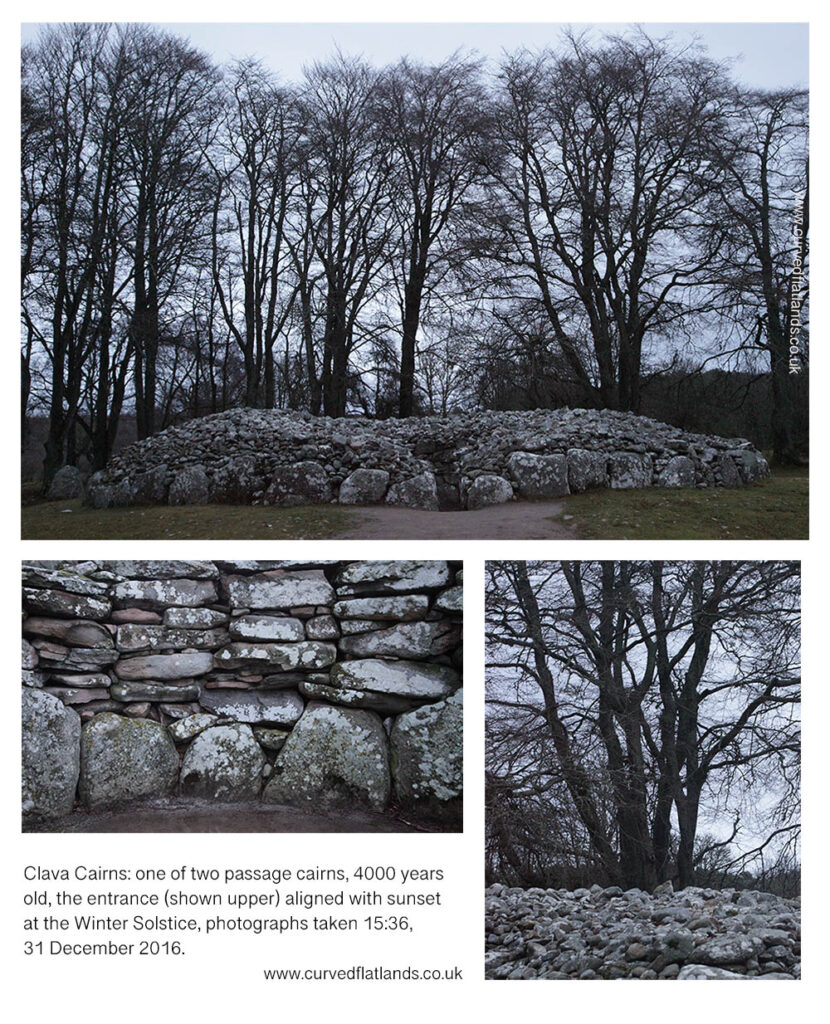The winter solstice is the period around the shortest day, 21 December [1]. It is a turning point in the annual solar calendar. In the tradition, the winter solstice is a time of renewal, the turning of the year.
Today in northern latitudes, midwinter is a time of family and festivals. Food is in the shops, much of it imported from a global food system. Yet midwinter was very different 5000 years ago in the late neolithic when the early settlers to these islands began to farm. They could not import: they had to grow their own or go hungry.
The arrival of the solstice reminded them how long they had to last on stored grain and livestock. They could add to their diet from wild harvesting and hunting, but once people had committed to a settled existence, they needed grain and grass to ensure their survival.
Three more months at least before the soil was warm enough to sprout fresh grazing and germinate sown seed to give next year’s grain. This lag between the annual cycles of solar radiation and temperature is a defining feature of agriculture in the north. Farming has to cope with it now, as then [2].
They first farmers built great stone monuments to help them follow the solar and lunar cycles. Some, such as at Maes Howe in Orkney and Balnuaran of Clava near Inverness, were designed to mark or to celebrate the winter solstice [3].
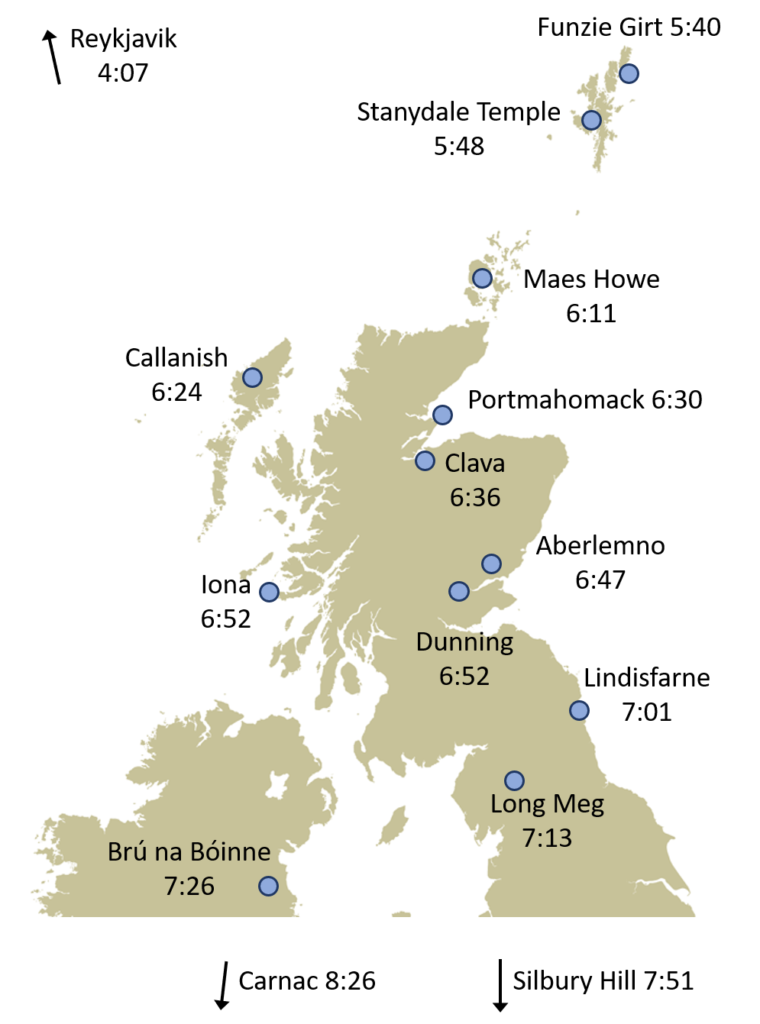
Fig. 1 Daylength at the winter solstice, 21 December, at a range of archaeological and historical sites. Hours:minutes shown are from sunrise and sunset tables for 2020, excluding twilight [4]
Daylight hours
When neolithic and bronze age people were making their way across Europe, they experienced the large change in the length of day and night from south to north (Fig. 1). For example, daylength at the neolithic site of Carnac in Brittany (8:26) is two hours longer than at Callanish on Lewis (6:24). At the northern tip of Shetland, it is 5:40 and much farther north in Iceland, around 4 hours.
The length of day determines what can be done outside without torches and street lights. The order reverses in summer – much more daylight in the north than south. The effect of the latitudinal change on life and lifestyle was (and is still) huge, but the early settlers balanced one thing against the other. They crossed dangerous seas to settle and survive throughout the range of daylength, including areas that even today seem remote to most city people.
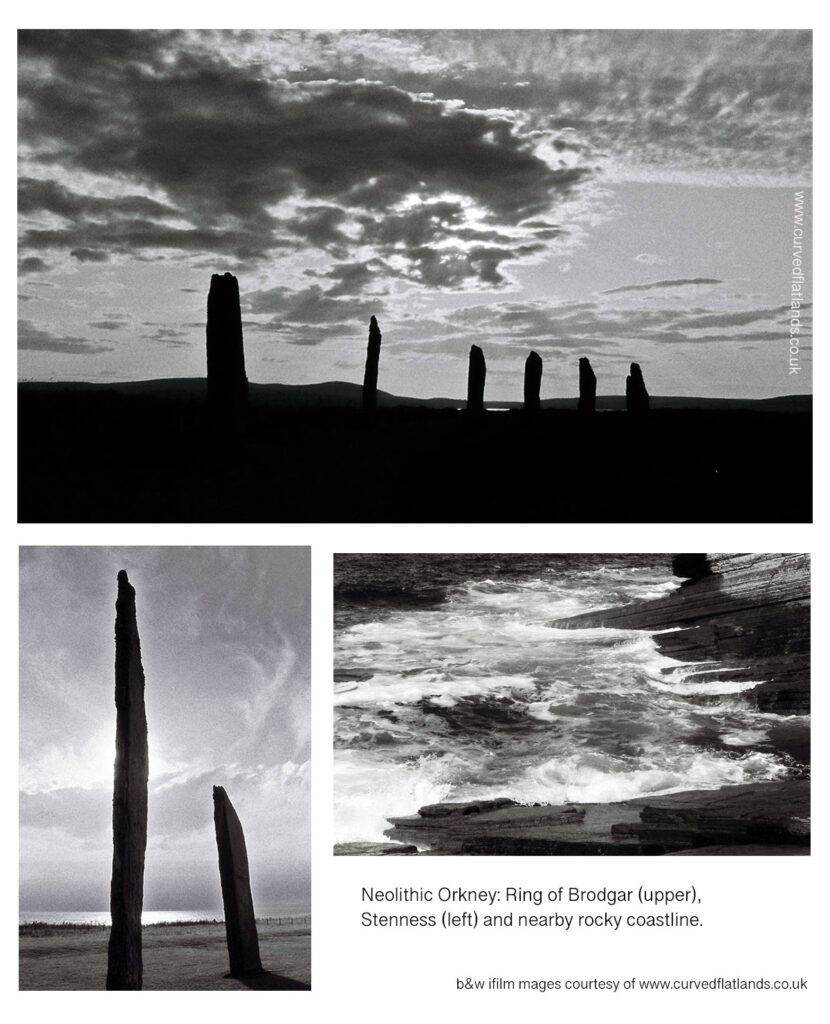
Sunrise, sunset and the three twilights
It would be difficult in most years, even with the aid of aligned monuments, to tell exactly when the shortest day had arrived. Daylength changes very slowly in mid to late December, and the position of the sun is often obscured by cloud or mist. Two other factors make the estimation more difficult – twilight and the shortest day not coinciding with the latest sunrise or earliest sunset (Fig. 2).
Light from the sun is still visible even after it dips below the horizon. This is the time of twilight, of which there are three divisions – civil, nautical and astronomical. The boundary between them is defined by the angle the sun (below the horizon) makes with the earth’s surface [4]. Most people sense night has fallen near the end of civil twilight, but under a cloudless sky it is also possible to ‘see’ well into nautical twilight.

Fig. 2 Change in length of the day and types of twilight (civil, nautical and astronomical) for 40 days either side the shortest day (SD) on 21 December. The earliest sunset (e ss) is about seven days before SD and the latest sunrise (l sr) 7 days after SD. Location: Inverness, latitude 57.5 north.
Civil twilight at the winter solstice varies with latitude less than daylength. For example, it ranges from about 40 minutes at Silbury Hill in Wiltshire to about an hour at Funzie Girt in Shetland .
There is also the complication that the latest sunrise and earliest sunset do not coincide with the shortest day (Fig. 2). The reasons are complex and depend on the axial tilt of the earth and its elliptical (not circular) trajectory round the sun [5].
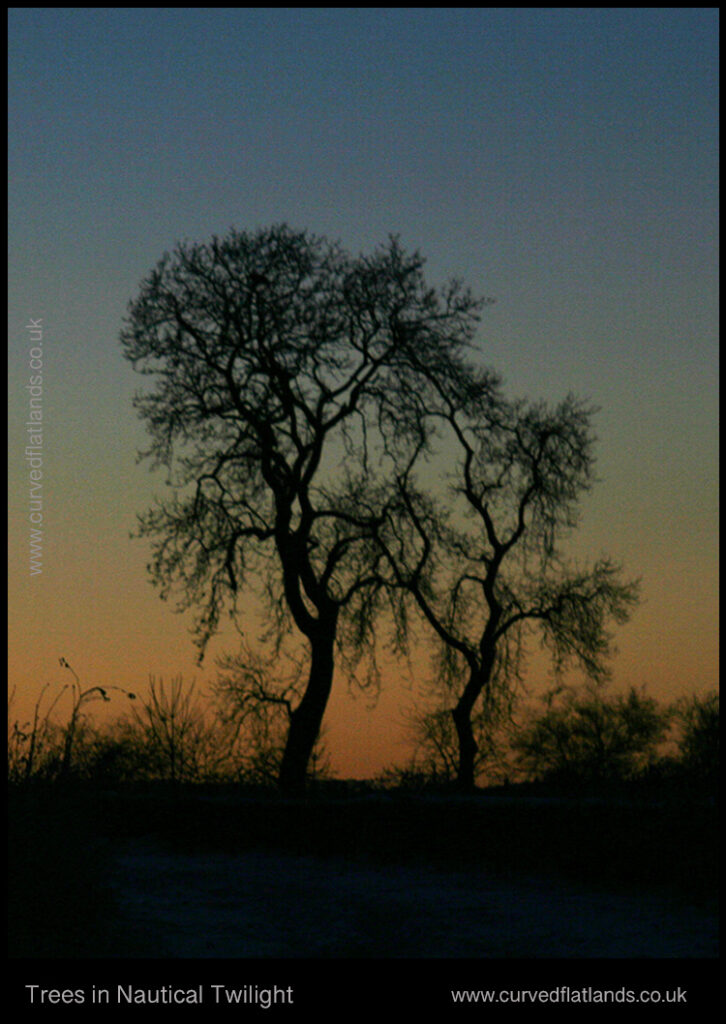
The photograph above shows two trees on the Hutton Farm near Dundee in 2010. It was taken after the end of civil twilight and well into nautical twilight. The original image was almost black, but shape and colour were revealed by digital processing.
Solar elevation and the sun’s intensity
The growth of crops and grass depends on the amount of solar energy reaching the earth’s surface rather than on the period of light. Daylength has an effect – it determines when some plants change their state, for example from vegetative to reproductive – but plants put on mass by capturing solar energy and using it to process carbon dioxide from the air into living matter.
The incoming solar energy increases from winter to summer solstices as a result of both increase in daylength and increase in the sun’s ‘height’ in the sky, defined as its elevation or altitude [Fig. 3]. Between winter and summer solstices, daylength increases about 2.6 times, while the sun’s elevation or altitude increases 5.6 times. (These values change with latitude – those cited are for Dundee near latitude 56N.)
The combination of longer days and rising altitude causes a 20-30 times increase in the incoming solar radiation reaching crops, grass and forest between the winter and summer solstices [6]. This, and the annual changes in temperature and rainfall, are the major factors that determine which types of crop and grass grow here, the times they can be planted and harvested and the yields they can attain.
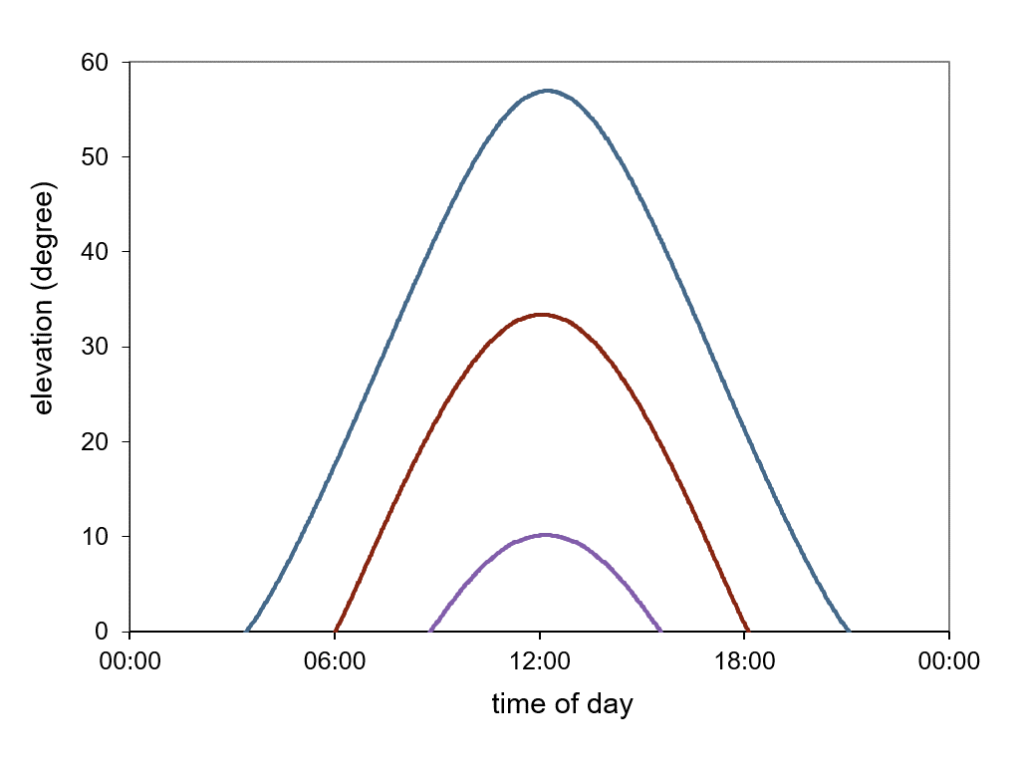
Fig. 3 Diagram to show the changes through the year in the rising and setting of the sun and its elevation or altitude at latitude 56N. The horizontal axis shows the time of day, the vertical axis the elevation or altitude of the sun (90 degrees would be directly overhead). The lower curve is for the winter solstice, the upper for the the summer solstice and the middle for the equinoxes [6].
Contact | author: geoff.squire@outlook.com or geoff.squire@hutton.ac.uk
Sources / links
[1] The winter solstice is defined in astronomy as a particular time on usually 21 December, but it is also used widely to mean the period of several days around the shortest day.
[2] Living Field web pages on The Year describe the changing annual cycles and their importance for farming and food production.
[3] Maes Howe, Orkney: Orkneyjar; for archaeological detail, Canmore; to see the solstice, Maeshowe webcam site. Balnuaran of Clava: Historic Environment Scotland; Canmore. See also the Winter solstice on the Living Field site.
[4] Daylength, twilight times and solar elevation are available online for almost anywhere on earth. One of the easiest web sites to use, and the most informative, is timeanddate.com – insert a named place where indicated to see daily data tables; once there, you can use the map facility to find any place. Try also NOAA Solar Calculator provided by the US Global Monitoring Laboratory.
[5] For explanation of the earth’s tilt and solar trajectory, try: Articles about Sun at timeanddate.com; a BBC Weather page; the explainingscience blog. For a thorough and authoritative account: Szokolay S.V. 1996 (rev 2007). Solar geometry. Passive and Low Energy Architecture International (PLEA) and Department of Architecture, University of Queensland.
[6] The Living Field article No Life Without the Sun gives further explanation of the effects of daylength and solar elevation on the changes in incoming solar radiation throughout the year.
